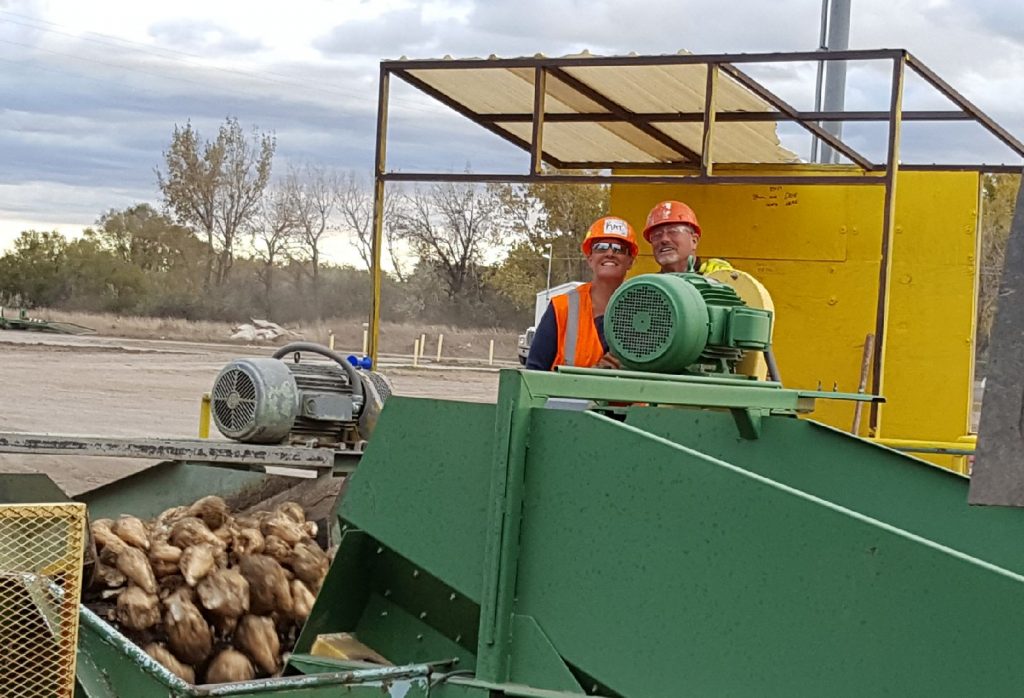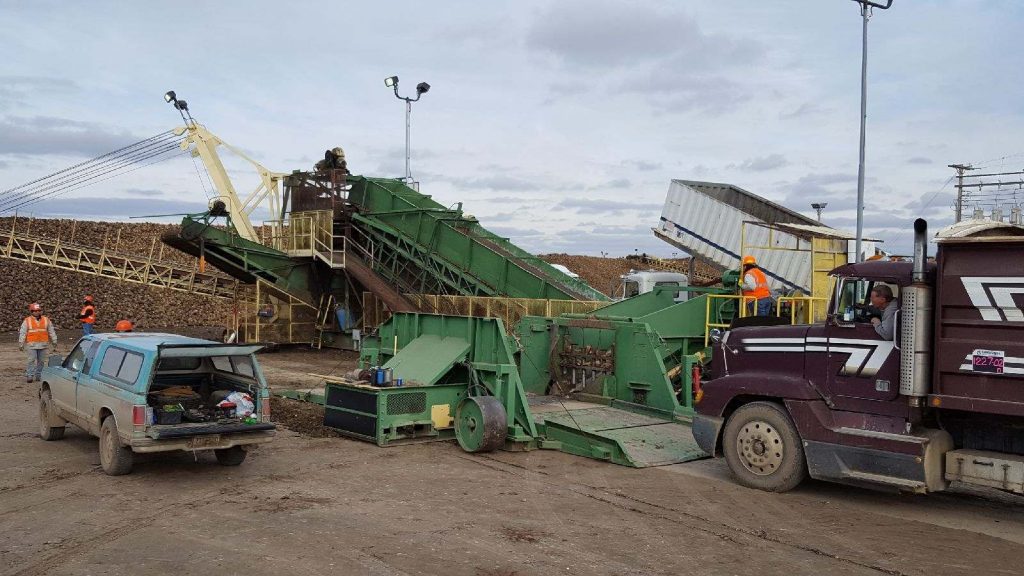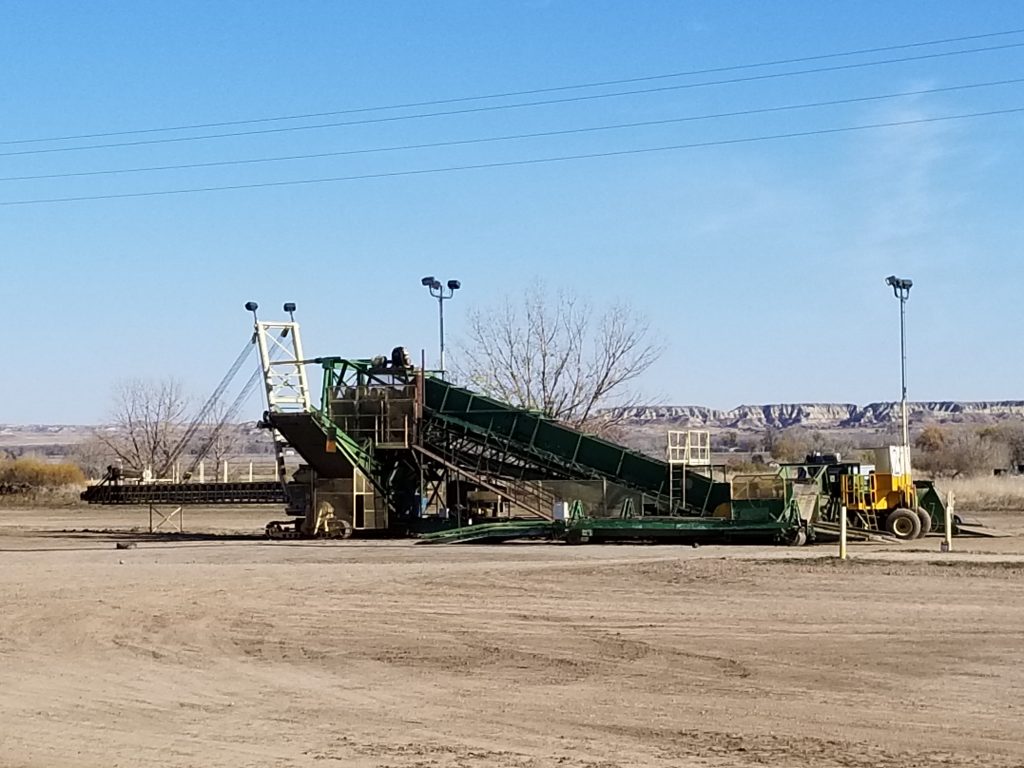
After several days on the road, traveling through all types of weather, we finally pulled into our next destination: Sidney, Montana. We were there for one reason and one reason only – to workcamp at the sugar beet harvest.
We had been warned by many of our fellow work campers that the sugar beet harvest was a tough job, that it wasn’t any fun and well…that it just plain sucked. Since we’re both the type that have to find out for ourselves, we decided to risk it and work the harvest.
The largest operations are in Minnesota and North Dakota, but since Bubba’s brother and father lived fairly close to Sidney, Montana, we requested to work that location.
Normally first year workcampers are sent directly to the night shift, since most piling yards operate 24/7. For some reason Lady Luck was on our side, and we were assigned to a piling facility whose scale house was only open from 7 am to 7 pm. No night shift for us!!!!
We arrived in Sidney a couple of days before orientation, and made good use of the time by grocery shopping and meal prepping. I swear, making two weeks’ worth of meals ahead of time and freezing them was a stroke of genius that made our lives so much easier once harvest began. It was totally worth the two full days of cooking.
Orientation day rolled around and we met the other couples we would be working with at our piling site and filled out the necessary paperwork. We were told all first year workcampers were assigned as assistants, and our foreman at the piling site would be making the final job assignments.
We drove out to the piling site and met our foreman and our agriculturist, who is basically the boss of the entire piling operation. He coordinates with the farmers and the sugar company, and makes sure everything keeps running smoothly.
We learned that the assistants would be working on the ground, taking the drivers’ weigh tickets and collecting beet samples for the lab to test for sugar content. The farmers are paid by the sugar content of their beets, and 40% of every field needed to be tested. This meant for every 10 loads from any given field, we would be collecting four samples.
The collection process was pretty easy – you just put a vinyl bag under a metal barrel, pull a lever, and it fills with beets. Then you wrap a Velcro strap around the neck of the bag to close it, put the truck driver’s sample ticket in a pouch on the front of the bag, and place it onto a nearby cart for the lab to collect. The bags weigh 20 to 30 lbs. with beets in them, so you do need to be able to lift that amount of weight fairly repetitively and place it on a platform about waist high.
I began working as an assistant while Bubba was assigned to run the piling machine, but within a fairly short amount of time I was moved up to the piler as well. From up there, you give the truck drivers signals to enter the hopper, when to raise and lower the dump bed of the truck, and when they’re empty and free to leave. You also have to keep an eye on the giant boom that piles the beets, making sure the end of it doesn’t get caught up in the beet pile.

At the end of the day, we would all grab tools and scrape the mud out of the machine so it wouldn’t freeze up overnight. Fighting the mud was a constant battle, and if the machines weren’t kept clean they could suffer catastrophic damage.
We had three piling machines at our site. We began harvest with an empty dirt lot, and at the end of about three weeks of work, we had a pile that stood about 20 feet high, 80 feet wide and over half a mile long. If I remember properly, some 33,000 acres of beet fields had been harvested.
On a normal day, we would head to the piling site at around 6:10 am, arriving by 6:30. This gave us plenty of time to finish our coffee and get all geared up in warm layers and in our safety equipment before clocking in at 7 am. We had plenty of opportunity throughout the day to take breaks and get off of our feet, use the bathroom or have lunch. Once the last truck had dumped and the piling machine was cleaned up, we headed home. Normally we would arrive back at the trailer around 8:15 pm. We would shower, eat a quick dinner, hit the sack and do it all again the next day. It was exhausting, but we also knew it was short-lived.
When we were hired as workcampers for the sugar beet harvest we were asked to commit to the entire month of October. Harvest began on October 1, and we had several days off during harvest due to weather. When the harvest was end and our work was done, it was the 22nd of October, and we pulled out of Sidney heading west on October 23rd. In all, we had actually worked a total of 16 days. Since we worked a lot of overtime (four to five hours each weekday and every hour worked on weekends), we walked out of there with a combined $10,000 for 16 days work. Not a bad haul!

All in all, we enjoyed the work we were doing while workcamping at the sugar beet harvest. We agreed that we would be back the following year to work it again. Although we had been warned away from it by many people, we’re both glad we took the chance and gave it a try.
